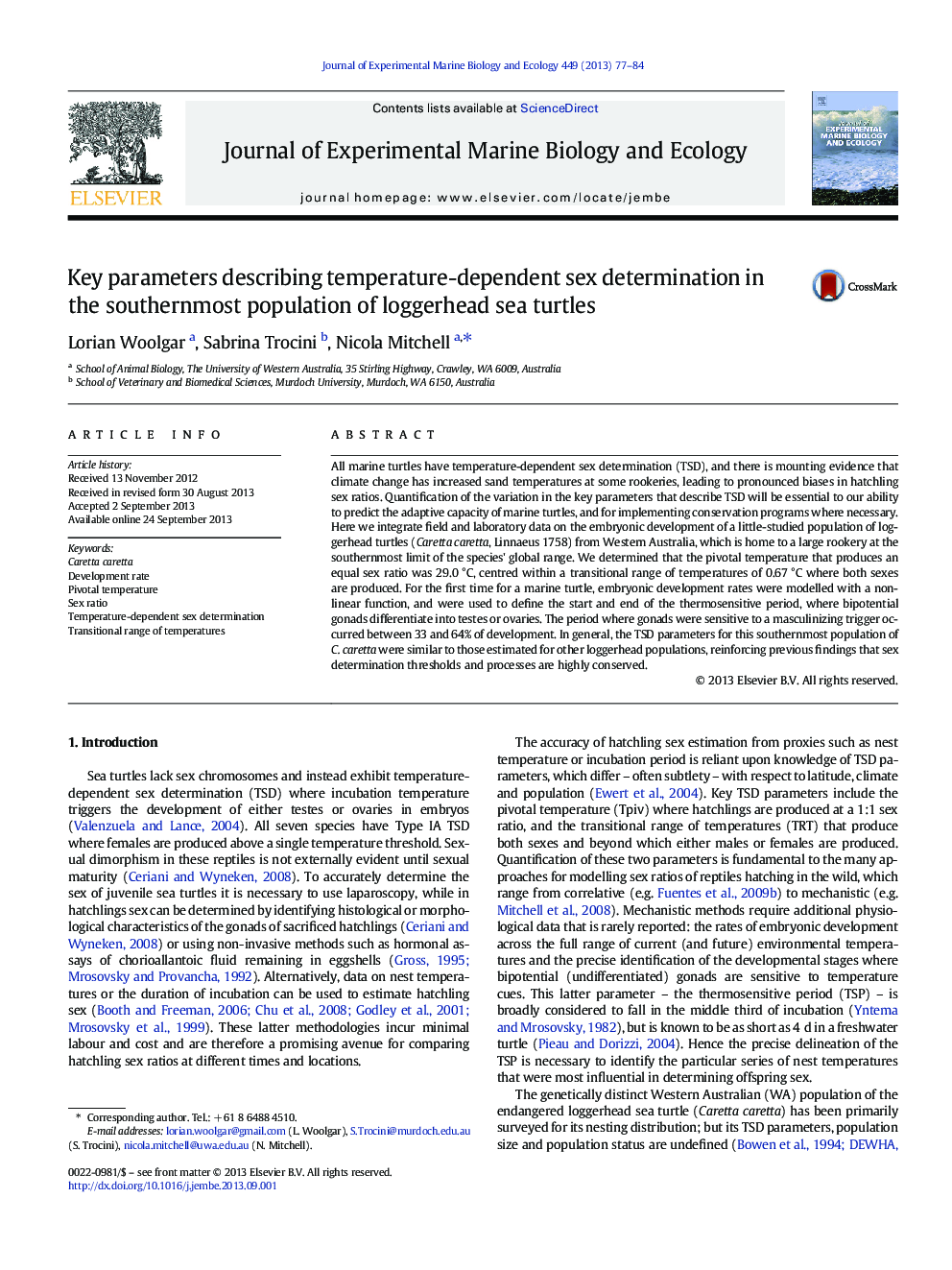| Article ID | Journal | Published Year | Pages | File Type |
|---|---|---|---|---|
| 6304255 | Journal of Experimental Marine Biology and Ecology | 2013 | 8 Pages |
Abstract
All marine turtles have temperature-dependent sex determination (TSD), and there is mounting evidence that climate change has increased sand temperatures at some rookeries, leading to pronounced biases in hatchling sex ratios. Quantification of the variation in the key parameters that describe TSD will be essential to our ability to predict the adaptive capacity of marine turtles, and for implementing conservation programs where necessary. Here we integrate field and laboratory data on the embryonic development of a little-studied population of loggerhead turtles (Caretta caretta, Linnaeus 1758) from Western Australia, which is home to a large rookery at the southernmost limit of the species' global range. We determined that the pivotal temperature that produces an equal sex ratio was 29.0 °C, centred within a transitional range of temperatures of 0.67 °C where both sexes are produced. For the first time for a marine turtle, embryonic development rates were modelled with a non-linear function, and were used to define the start and end of the thermosensitive period, where bipotential gonads differentiate into testes or ovaries. The period where gonads were sensitive to a masculinizing trigger occurred between 33 and 64% of development. In general, the TSD parameters for this southernmost population of C. caretta were similar to those estimated for other loggerhead populations, reinforcing previous findings that sex determination thresholds and processes are highly conserved.
Related Topics
Life Sciences
Agricultural and Biological Sciences
Aquatic Science
Authors
Lorian Woolgar, Sabrina Trocini, Nicola Mitchell,
